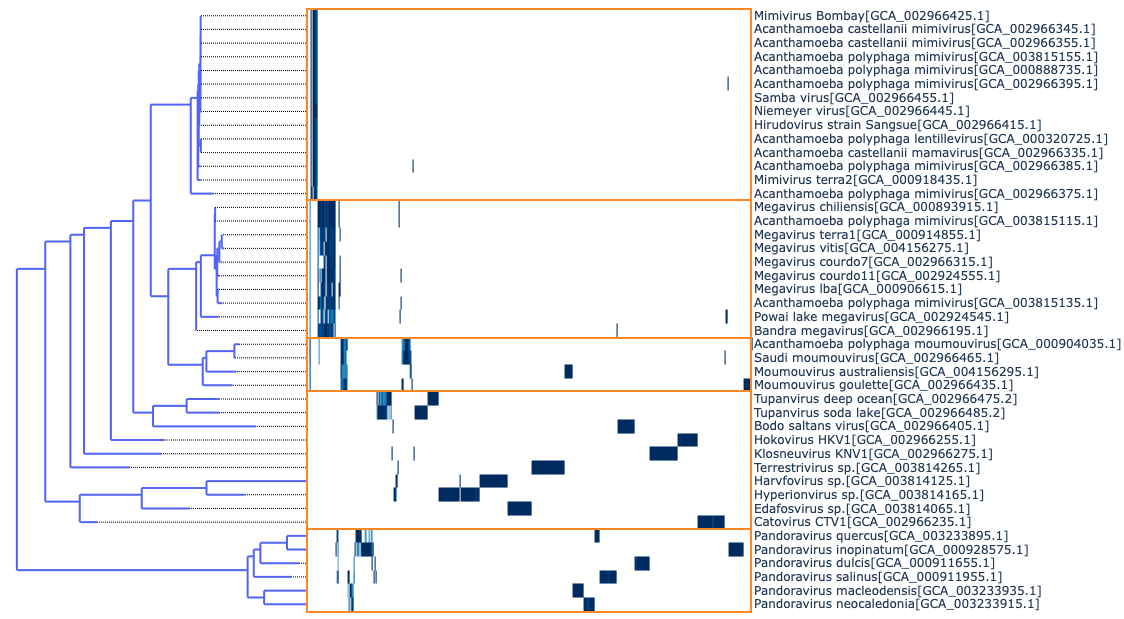Giant Viruses
Organism
One of the more surprising discoveries of the genomic era has been the existance of giant viruses which (primarily) infect amoeba (wiki). These viruses are so large that they prompted a real debate about where to draw the line between non-living viruses and cellular life.
The first giant virus to be discovered was mimivirus, which infects the amoeba Acanthamoeba polyphaga, and I highly recommend a review on this group of giant viruses by Colson, et al. Nature Reviews Microbiology, 2017. Pandoraviruses are yet another group of giant viruses discovered infecting amoeba in 2013 (Philippe, et al. Science, 2013). While much has been discovered about these unexpected organisms, this is very much an active area of research.
Map
A small set of 44 giant virus genomes were identified in the NCBI Genome Browser on January 6, 2022, filtering to those genomes which were at least 1,000,000bp in size.
Notes
While this map only contains a small number of genomes, I think it tells a clear story that there is a much wider world of viruses still left to discover.
Walking through the map (and you can follow along with the annotated non-interactive version below), the group of viruses at the top appear to be Mimivirus, with the Megavirus immediately beneath it. There are a few genomes which seem to be mislabelled between the two groups, but each group seems fairly cohesive.
Next we have a group of four genomes labelled Moumouvirus, two of which are similar to each other and the other two which generally contain distinct coding content.
Between the Moumouvirus and the Pandoravirus (which is at the very bottom), we see a collection of viruses which are all generally unique. This includes Bodo saltans virus, Hokovirus, Klosneuvirus, etc. While the sample size for this map is rather small (n=44), I think it is still notable that these genomes contain almost entirely distinct coding sequences even at a similarity threshold of 80% amino acid identity.
Even within the Pandoravirus group at the bottom of the map we see a group of viruses with almost entirely unique protein-coding content. Overall, this extreme amount of genomic diversity suggests to me that there is a relatively large number of distinct lineages of giant viruses out in the world remaining to be discovered.
